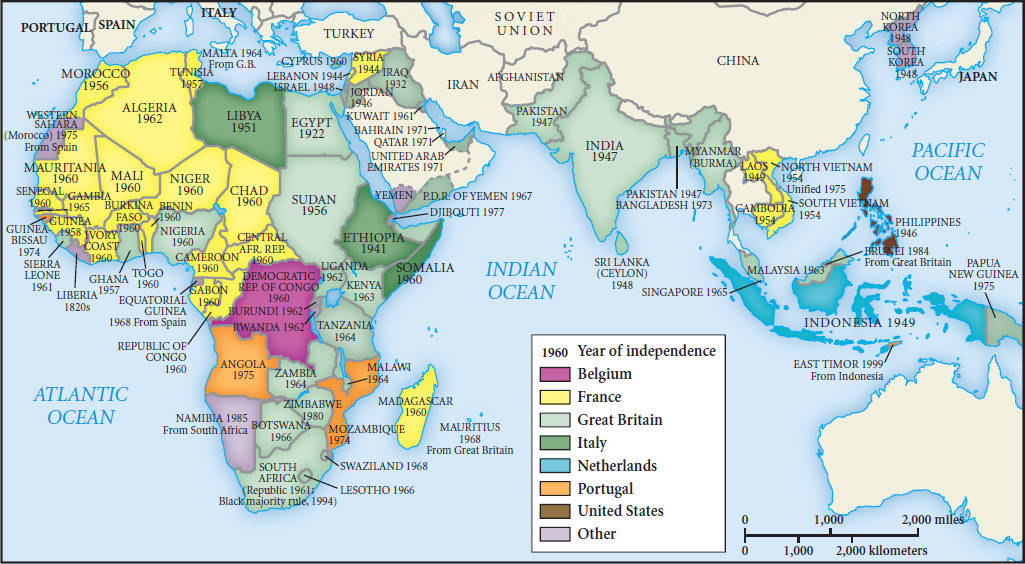The End of Empire in World History
Comparison
Question
What was distinctive about the end of Europe’s African and Asian empires compared to other cases of imperial disintegration?
[Answer Question]
At one level, this vast process was but the latest case of imperial dissolution, a fate that had overtaken earlier empires, including those of the Assyrians, Romans, Arabs, and Mongols. But never before had the end of empire been so associated with the mobilization of the masses around a nationalist ideology; nor had these earlier cases generated a plethora of nation-states, each claiming an equal place in a world of nation-states. More comparable perhaps was that first decolonization, in which the European colonies in the Americas threw off British, French, Spanish, or Portuguese rule during the late eighteenth and early nineteenth centuries (see Chapter 16). Like their earlier counterparts, the new nations of the twentieth century claimed an international status equivalent to that of their former rulers. In the Americas, however, many of the colonized people were themselves of European origin, sharing much of their culture with their colonial rulers. In that respect, the African and Asian struggles of the twentieth century were very different, for they not only asserted political independence but also affirmed the vitality of their cultures, which had been submerged and denigrated during the colonial era.
The twentieth century witnessed the demise of many empires. The Austrian and Ottoman empires collapsed following World War I, giving rise to a number of new states in Europe and the Middle East. The Russian Empire also unraveled, although it was soon reassembled under the auspices of the Soviet Union. World War II ended the German and Japanese empires. African and Asian movements for independence shared with these other end-of-empire stories the ideal of national self-determination. This novel idea—that humankind was naturally divided into distinct peoples or nations, each of which deserved an independent state of its own—was loudly proclaimed by the winning side of both world wars. It gained an Afro-Asian following in the twentieth century and rendered empire illegitimate in the eyes of growing numbers of people.
Empires without territory, such as the powerful influence that the United States exercised in Latin America, likewise came under attack from highly nationalist governments. An intrusive U.S. presence was certainly one factor stimulating the Mexican Revolution, which began in 1910. One of the outcomes of that upheaval was the nationalization in 1937 of Mexico’s oil industry, much of which was owned by American and British investors. Similar actions accompanied Cuba’s revolution of 1959–1960 and also occurred in other places throughout Latin America and elsewhere. National self-determination and freedom from Soviet control likewise lay behind the eastern European revolutions of 1989 as well. The disintegration of the Soviet Union itself in 1991 brought to an inglorious end the last of the major territorial empires of the twentieth century and the birth of fifteen new national states. Although the winning of political independence for Europe’s African and Asian colonies was perhaps the most spectacular challenge to empire in the twentieth century, that process was part of a larger pattern in modern world history (see Map 22.1).
